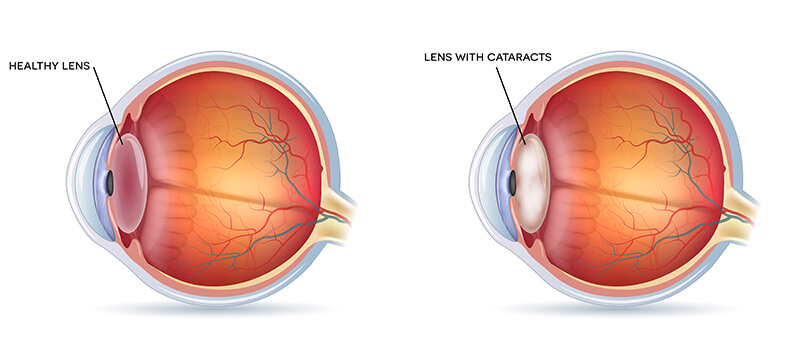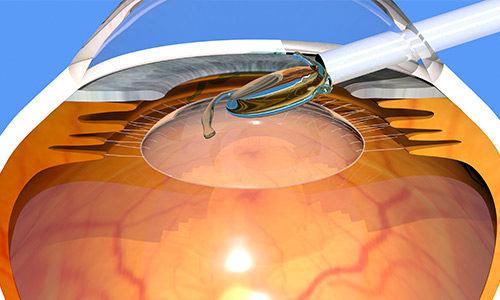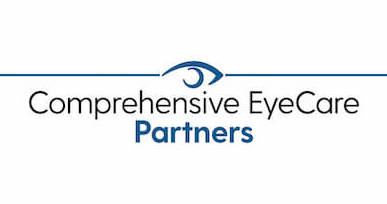Experience Advanced Cataract Surgery with Las Vegas’s Most Trusted Eye Surgeons

For over three decades, Shepherd Eye Center has been Las Vegas’s leader in advanced cataract surgery, helping thousands of patients regain crystal-clear vision through our pioneering “no shot, no-stitch, no patch” procedure. Our board-certified surgeons combine decades of experience with the latest laser technology to make cataract surgery as comfortable and successful as possible.
Why choose Shepherd Eye Center?
- Advanced Technology: State-of-the-art phacoemulsification and laser-assisted techniques
- Proven Experience: Over 15,000 successful cataract surgeries performed
- Comfort-First Approach: Our signature “no shot, no-stitch, no patch” method
- Premium Lens Options: Widest selection of advanced lens implants in Las Vegas
- 5 Convenient Locations serving Las Vegas and Henderson
Las Vegas’s Most Experienced Cataract Surgery Team
When it comes to your vision, experience matters. At Shepherd Eye Center, our board-certified ophthalmologists have collectively performed over 15,000 cataract surgeries, with a success rate consistent with the highest industry standards.
Our Credentials Include:
- Board-certified ophthalmologists with fellowship training
- Over 75 years of combined surgical experience across our team
- Members of the American Academy of Ophthalmology
- Pioneers in “no shot, no-stitch, no patch” technique in Nevada
- Published research in leading ophthalmology journals
Led by renowned surgeons including Dr. John R. Shepherd (Founder), Dr. Adam J. Rovit, and Dr. Ravi K. Reddy, our team has earned the trust of thousands of Las Vegas families and fellow physicians who choose us for their own cataract surgery.
Ready to meet with our experienced team? Contact Us Today >
What is a cataract?
A cataract is the clouding of the disc-shaped, normally clear lens of the eye, found just behind the iris. The lens acts much like the lens in a camera, focusing the images on the retina of the eye. The retina then transfers the visual image to the brain, which permits vision. When the lens is cloudy or opaque with a cataract, light does not properly enter the eye and is not properly focused on the retina. Cataracts are a normal part of the aging process and can begin to affect the clarity of vision at any age. In fact, it is said that most people will develop cataracts if they live long enough.

How can I tell that I have cataracts? What are the symptoms?
Early changes may not disturb vision, but over time, cataracts will result in blurred or fuzzy vision, difficulty reading, and driving at night due to sensitivity to light and glare. People with advanced cataracts often say they feel as if they’re looking through a waterfall or a piece of wax paper. If left untreated, cataracts can lead to reversible blindness.
Symptoms of Cataracts:
- Decreasing vision with age
- Blurred or Double Vision
- Seeing Halos around Bright lights
- Difficulty distinguishing colors
- Frequent prescription changes for glasses
- Difficulty reading
Diagnosing Cataracts
If you suspect that you have cataracts, you should make an appointment with your eye care provider. If you typically see an optometrist, you will be referred to an ophthalmologist to be further evaluated. You can expect the following tests to be performed:
- Visual Acuity Test- A standard visual acuity test will give you an indication of your vision quality. This may include nearsightedness, farsightedness, or astigmatism. Poor results will indicate that some form of vision treatment is needed.
- Dilated Eye Exam- Your eyes will be dilated with drops (pupils are “widened”) so that the ophthalmologist can examine the retina and optic nerve. The physician will also look for visual signs of a cataract.
- Tonometry- Another important part of your eye exam is a pressure check of the eyes. The constant pressure can be a contributing factor in cataract formation, but can also be detrimental in other ways. Your physician will discuss with you whether any treatments are necessary to deal with high eye pressure.

What causes cataracts and how are they treated?
Currently, there is no treatment to reverse or prevent the development of cataracts. Once they form, the only way to achieve clear vision again is through cataract surgery. In your parents’ or grandparents’ day, cataract surgery required a lengthy hospital stay and was usually postponed for as long as possible. With modern techniques, cataracts are removed when they impact your vision and we cannot improve your visual acuity with glasses or contact lenses to the level of your needs.
Causes of Cataracts:
- Age
- Eye trauma
- Diabetes
- Some medications including long-term use of oral steroids
- Smoking
- Glaucoma
What is cataract surgery like?
Cataract surgery is considered to be one of the safest and most successful procedures performed in medicine today. It is the most common surgery for Americans over the age of 65. Ninety-five percent of people 85 years old has cataracts. Almost 50% of people age 65 have a developing cataract. Over time, cataract surgery has evolved into a “no shot, no-stitch, no patch” procedure. In many cases, the patient is awake and alert. No large shots or painful injections are required. Today, cataract surgery is a comfortable outpatient procedure that allows patients to avoid the inconvenience and expense of a hospital stay. In fact, most patients’ vision recovers well enough to see to drive as quickly as one day after surgery.
The Surgical Process
Surgical removal of the cataract begins by creating a microscopic corneal incision. Next, a small probe is inserted through the incision and the cataract is broken up and suctioned out with gentle ultrasonic vibrations. This process is known as phacoemulsification or simply “phaco”. Once the damaged lens is removed, a foldable, acrylic artificial lens, called an Intraocular Lens (IOL) is implanted to replace the cataract. Because of the small size of the incision, the opening seals itself naturally and allows for comfortable and rapid healing. While you will probably be in the surgery center for about two hours, the surgery itself lasts only 10-15 minutes.
Real Stories from Real Patients
Don’t just take our word for it – hear from patients who’ve experienced the life-changing results of cataract surgery at Shepherd Eye Center.
“What an incredible experience from start to finish!”
“The front office staff, medical assistants, and doctors at the Shepherd Eye Center are exceptional. Their professionalism, kindness, and helpfulness, from check-in to check-out, are rare to find these days. I have nothing but great things to say about this outstanding team.” — Douglas S., Las Vegas, NV
Ready to join thousands of satisfied patients? Start Your Journey >
Cataract Surgery Lens Options

When a cataract is removed, it is necessary to replace it with an implantable artificial lens. There are many lens options. The surgeon can help you understand which choice is best for your particular needs. Currently, most insurances, including Medicare, only cover a monofocal lens. You may also hear it referred to as a “standard” lens.
For patients that do not mind wearing glasses all of the time after cataract surgery, a monofocal lens is appropriate. A monofocal artificial lens can only focus images at one distance and are most often used to provide good distance vision after cataract surgery. This means patients will need glasses to see at near and intermediate distances. If you are looking for options that will reduce your dependence on glasses, a multifocal or presbyopia-correcting lens may be right for you. Presbyopia is the condition most people over the age of 40 experience that results in difficulty seeing clearly up close, which usually means the patient will need bifocals, trifocals or reading glasses. This age-related condition is believed to be caused by a hardening of the natural lens inside the eye, making it difficult for the eye’s muscles to change its focus from near to distant, as it could when we were young. Many people realize they have developed presbyopia when they find themselves having to push reading materials further and further away to read. A multifocal lens allows for 2 points of focus instead of just one as with a monofocal lens.
Not everyone is a good candidate for multifocal artificial implants, so make sure and ask your doctor about your options. The newest category of IOLs is the extended range of vision lenses. These lenses provide a range of improved vision from near to intermediate and far distances. This lens may also decrease your need for glasses or contacts. Our doctors will discuss which type of artificial implant is right for your eyes as well as your lifestyle needs. If you are a patient that suffers from moderate to high levels of astigmatism, there is still another choice for visual correction via the intraocular lens-a Toric IOL. The Toric IOL is able to neutralize the astigmatism of the eye. With Toric artificial lenses, our patients enjoy a faster, more comfortable recovery and Toric IOLs are the most accurate way to correct unwanted astigmatism. The multifocal, extended range of vision, and Toric lenses, and are not covered by insurance. These lenses are an out of the pocket expense. The cost associated with any of these lens options can be discussed during your preoperative appointment
Preparing for Surgery
Once the doctor has determined that cataract surgery is necessary or appropriate, you will be scheduled for a preoperative appointment. During this preoperative appointment, you will have measurements taken to assess the necessary power of the new intraocular lens. Our technician or biometrist will take these measurements often known as A-scan. This diagnostic test assesses the length of the eye. Following the measurement appointment, you will meet with a surgery scheduler to plan your surgery date and provide preoperative instructions, including the ordering of prescription eye drops to be administered before and after surgery.
Realistic Expectations
The goal of cataract surgery is to reduce impaired vision, with the added benefit of the possible reduction for the need of glasses. Your doctor cannot guarantee that you will never wear glasses again. You will be given additional information about these procedures to help you make an informed decision. Be sure to have all your questions answered to your satisfaction before proceeding with surgery.
A Whole New Perspective
The day after cataract surgery, most patients find they can resume many everyday activities-watching TV, reading, even some light chores. Then, within a week, you’ll likely be ready to take on a new world of enhanced vision-you can drive, go back to work, and much, much more. After the procedure, colors may seem more vibrant, your vision clearer, more in focus, maybe for the first time in years. Think about how this new outlook will change your life. Restored vision often motivates patients to pick up the tasks and hobbies that their cataracts once prevented them from doing-you might even be inspired to take up some new ones. And why not? Cataract surgery doesn’t just improve your vision-it opens up a whole world of possibilities!


